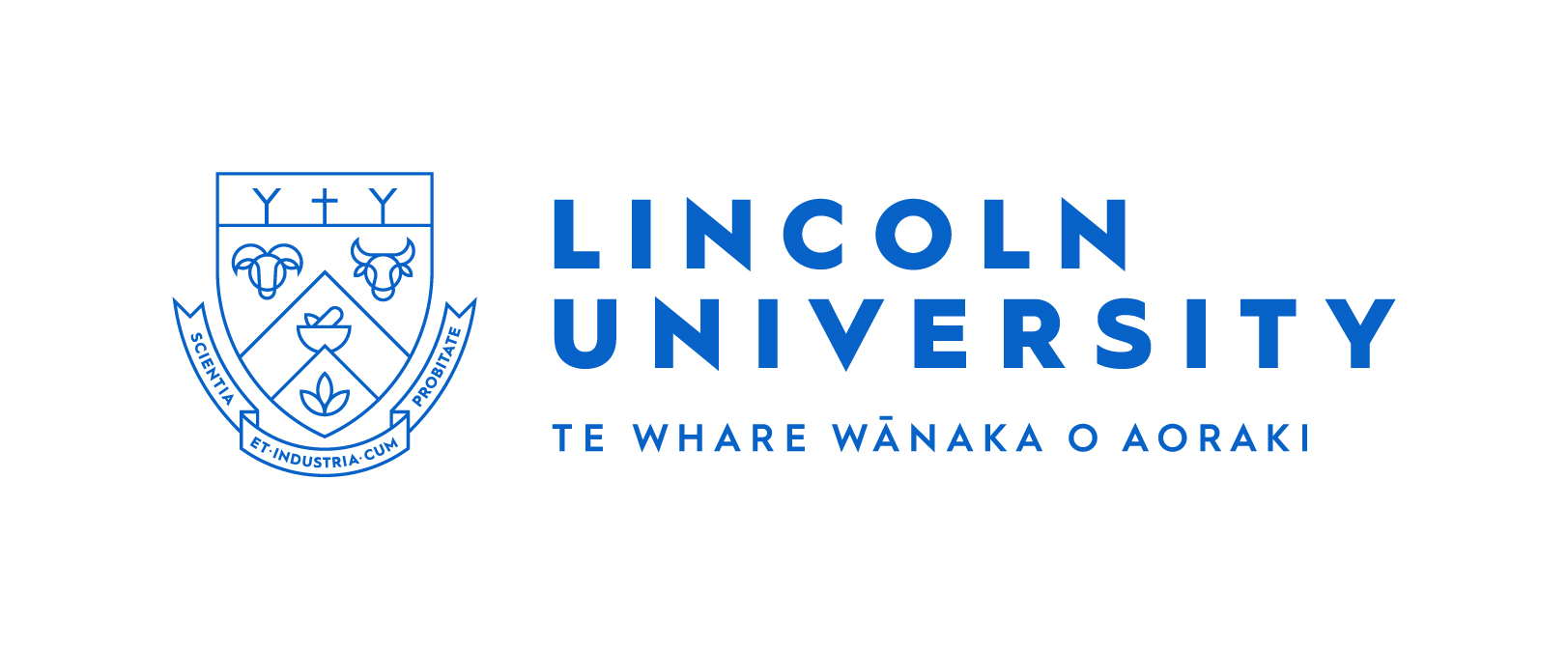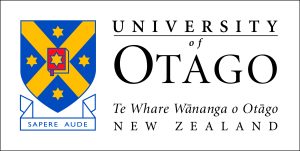Whether irrigation is associated with an increase or decrease in organic matter in New Zealand soils is an important question. While there are some clear findings, context, starting point and management influence the outcome. The topic is contentious and complex, and like many questions in science, the best answer is ‘it depends’. Knowing the factors upon which ‘it depends’ will help decision-making.
This ‘Hot Topic’ reviews the literature and outlines the factors affecting changes in soil organic matter (approximately 58% of which is soil carbon) under irrigation. It also considers implications for the future in a water-sensitive and carbon-sensitive world.
Introduction
The effect of irrigation on soil organic carbon (SOC) globally has been assessed (Emde et al., 2021) in a systematic review of peer-reviewed scientific studies. These studies examined changes in SOC at irrigated agricultural sites over time. The review was followed by a meta-analysis of the globally available data. The review authors concluded that although conversion of non-cultivated land for agriculture over the last two centuries has substantially reduced global soil organic carbon (C) stocks in upper soil layers, practices such as no- or reduced-tillage, the application of organic soil amendments, and the maintenance of continuous cover can increase soil carbon. Overall, the authors found that irrigated agriculture increased soil organic carbon stocks by 5.9%.
Within this positive overall picture are many different contexts, starting points and management factors which are difficult to sort out just by reading the literature. New Zealand’s own scientists have made this clear:
‘The impact of irrigation on soil carbon stocks reported in the international literature is variable and contradictory, depending on the balance between changes in carbon inputs, allocation and turnover’ (Whitehead et al., 2018).
Other New Zealand scientists note the ‘Irrigation of grazed pasture significantly increases plant and animal production, which may in turn increase soil organic carbon (SOC), depending on the balance between primary production and below-ground allocation of C on the one hand, and the decomposition and export of C from the soil on the other’ (Condron et al., 2014).
From the statements above, it is apparent that the stock of carbon in the soil is the result of a dynamic equilibrium affected by biological processes, the rates of which are determined by temperature, soil moisture and, in agricultural systems, management which includes the management of irrigation. The stock of carbon is also affected by soil type, with some of New Zealand’s unfarmed older granite soils in Fiordland, the Paparoa Ranges and North-West Nelson being naturally very low in SOC.
The interactions affecting soil organic carbon explained
Professor Tony Parsons has used the Hurley Pasture Model (HPM) to explain the interaction of factors that affect SOC in cool temperate grassland. The HPM is a dynamic, process-based model of carbon and nitrogen (N) inputs, cycling and fate. It covers plants, animals, and soils and their interaction, and is predicated upon the ideal harvest of pasture material.
Professor Parsons retired before formally publishing the irrigation results, but they are available on a dedicated website hosted by Massey University https://sites.massey.ac.nz/hurleypasturemodel/case-studies/irrigation/. Further, he described the results in the 2017 New Zealand Agricultural Greenhouse Gas Research Centre (NZAGRC) Annual report https://www.nzagrc.org.nz/assets/Publications/NZAGRC-2017-Annual-Report.pdf.
His words are presented here:
‘Reductions in soil carbon following irrigation are due to increasing N limitation. Both water input, and N inputs, increase plant C capture (and so growth). Individually or together, they might be expected to increase opportunities for soil C gain, however, they interact, and the interaction is dynamic. Whichever of the two is most limiting, limits most. If or when adding water stimulates C fixation and plant growth, greater uptake of N by plants is stimulated, which in turn leads to greater removal of N in products (meat and/or milk). This means that for any sustained N input rate, over time there will be an increasing N deficiency. Managements that are more effective in harvesting N taken up by plants, into products, therefore exacerbate the onset of N deficiency’ (Parsons, 2017).
The HPM model was run for paddocks at the Winchmore Research Station (near Ashburton). This Station was established in the late 1940s to investigate challenges associated with the introduction of irrigation in farming and the benefits of irrigation and phosphate fertiliser for pasture and crop production, as well as for sheep and beef farming. Its focus broadened as time passed to include research into dairy farming and the role of nitrogenous (N) fertilisers.
In the HPM modelling at Winchmore, starting from low N input dry-stock systems, a shift to dairy reduced soil carbon. The use of irrigation further reduced soil carbon. This might be taken to suggest that both dairy farming and irrigation are ‘bad’.
However, increasing fertiliser N input (on top of both a change to dairy and irrigation) increased soil carbon. The yield of products, nitrogen losses and methane emissions were all far more favourable with irrigation, than if nitrogen alone had been added. In short, use of irrigation during dry periods in dry regions can greatly increase plant growth, carbon sequestration and yields of products; provided N inputs are also increased. Of note also, was that the potentially adverse environmental impacts of dairy farming, water and N input increases, were not much greater (and were potentially less) than if the system had remained a low input dry-stock system, such is the difference in system-wide efficiency under dairy and irrigation.
Developing N limitation (as N was removed from the system in plants and the animals that eat them), and not (as was proposed by Mudge et al., 2016) increases in soil respiration under irrigation, was the main driver of the decline in the soil carbon under irrigation. While some respiration increases were seen, these followed, rather than drove, changes in carbon inputs and sequestered carbon levels.
Parsons (2018) compared carbon pools under irrigated and dry dairy systems with increasing N https://sites.massey.ac.nz/hurleypasturemodel/case-studies/c-and-n-balances/. Irrigation and nitrogen addition was associated with an increase in shoot and root biomass and an increase in milk production and soil carbon. This is explained in more detail below and can be used to inform our thinking about changes in land management.
New Zealand trials – the results and the explanation
The research at Winchmore (used by Parsons as a base model) compared dryland (740 rainfall mm/yr), with land subject to 260 or 770 mm of irrigation supplied water per year. This was applied as 100 mm tranches when the soil reached 10 and 20% gravimetric moisture content, respectively (Condron et al., 2014).
Pasture production (which would be available for consumption by livestock) increased by 44 and 74%, respectively, in the irrigated system compared to the dryland system (Condron et al., 2014). To a depth of 1 m, the SOC was not significantly different between dryland (125.5 t SOC/ha) and 10% irrigation (117.8 t SOC/ha), but both had significantly more carbon than the 20% irrigation treatment (93.0 t SOC/ha).
Microbial biomass did not differ between treatments, but the respiration rate (carbon dioxide production) of soil organisms in the 20% irrigation treatment was consistently greater than in the other two treatments. Further, the labile SOC decreased with increasing moisture. The authors (Condron et al., 2014) concluded that large increases in plant productivity because of irrigation had either no effect, or they significantly reduced SOC stocks under grazed pasture, depending upon the increased off-take in products, increased losses due to increased stocking rate, and accelerated decomposition of organic carbon as result of elevated soil moisture being maintained throughout the growing season.
Factors that contributed to the 20% reduction in organic matter in the soil profile to 1m in response to irrigation included the quality of plant/animal organic matter (including C:N) entering the soil. This was indicated by pasture composition – white clover was common under irrigation whereas subterranean clover was apparent on the dryland sites. Higher soil water content under irrigation through spring-summer, enabling increased earthworm abundance and activity, is also likely to have been a factor.
There was evidence (although not significant) that there were fewer stones in the topsoil under irrigated pasture compared with dryland, which was attributed (no measurements were taken) to enhanced earthworm activity (Condron et al., 2012; Fraser et al., 2012). Of interest is that comparable data from the Winchmore fertiliser trial (where all treatments were irrigated with different inputs of P fertiliser), revealed that despite substantial increases in plant and animal production, P fertiliser inputs had no impact on the quantity of soil organic matter in the soil profile (Condron et al., 2012).
Using data from the same irrigation research site in a modelling exercise, Kelliher et al. (2012) estimated that irrigation increased carbon inputs to the soil by 36%, but increased decomposition rates by 97%. They concluded that this difference between inputs and outputs was able to account for the measured difference in carbon stocks. All this fits with Parsons (2018) conclusion.
Carmona (2020), working on the Winchmore site for her PhD research, reported no demonstrable effects on storage and loss of new photosynthate partitioned into the soil in comparison with dryland treatments. In her research, summer irrigation was applied to increase above-ground pasture productivity in managed ryegrass-white clover pastures. She found a change in the spatial and temporal partitioning of root-derived carbon: the accumulation of new photosynthate carbon in the rhizosphere soil was reduced, whereas the accumulation of this new carbon in the fine particulate organic matter (53-250 μm) and clay (< 5 μm) size fractions of the non-rhizosphere soil was increased. Further, with irrigation the root system became smaller and shallower, with the pasture biomass allocation to above-ground plant components being favoured.
Again, this is part of the conundrum. Because the components affecting productivity of plant and animal interact in dynamic fashion, it is difficult to sort out cause and effect (Parsons, 2018).
More confusion has been created by reports from a short-term study at an irrigated dairy grassland on the Canterbury Plains using a carbon-balance approach. A small increase in soil carbon stock over three years of 0.81 t/ha per year was recorded under irrigation, whereas an adjacent non-irrigated grassland was carbon neutral (Laubach & Hunt, 2018). This appeared to conflict with reports from Mudge et al. (2016), who measured adjacent irrigated and non-irrigated grassland soils at 34 paired sites across New Zealand. Mean soil carbon stocks to a depth of 0.3 m were 7.0 t/ha lower at irrigated sites compared with non-irrigated sites. Fifteen sites were sampled to 0.6 m. The carbon stock difference was 9.9 t/ha (Mudge et al., 2016). Both Kelliher et al. (2012) and Mudge et al. (2016) proposed that the apparent reduction in soil carbon under irrigated grazed grassland in comparison with dryland, was due to increased rates of decomposition in irrigated soils during the warm summer season.
However, as already discussed, Parsons (2017) has shown that progressive N limitation is likely to be the driving force of this.
Recent research (Lambie et al., 2022) confirms no differences in basal respiration between irrigation treatments but did report an alteration of microbial populations that the authors suggested might contribute to loss of soil carbon and the soil’s ability to deliver ‘ecosystem services’.
Further complexities have been revealed through modelling scenario analysis in dairy production (Kirschbaum et al., 2017). At low water availability, photosynthetic carbon inputs to soil were low (i.e., plants did not grow as well), leading to low milk production and low soil carbon stocks. With increasing water availability from a very low base, both soil carbon and milk production increased. Thus far, Parsons’ work (2017, 2018) agrees. However, Kirschbaum et al. (2017) suggested that while further increases in water availability increased milk production, soil carbon reached a peak at intermediate values with an increasing proportion of photosynthetic carbon inputs to milk production. Soil carbon decomposition rates also increased with water availability compared with rates in dry soils, resulting in further carbon stock reduction. This supports the N-limitation theory articulated by Parsons (2017).
Overall, both Mudge et al. (2016) and Whitehead et al. (2018) concluded that there would be no change or a decrease in soil carbon stocks in response to irrigation in the temperate climates of New Zealand. However, increases could be expected at more arid sites where plant productivity is very low prior to irrigation (Whitehead et al., 2018), and as articulated by Parsons (2017), the N available for plant growth would be what limited SOC increases.
A global context
In 2017, a multi-country group of authors (Conant et al., 2017) addressed the ‘growing interest in how changes in management might shift the net balance of these flows, stemming losses from degrading grasslands or managing systems to increase soil carbon stocks (i.e., carbon sequestration).’ Building on work involving some of the same authors (Conant et al., 2001), they reported that improved grazing management, fertilization, the sowing of legumes and improved grass species, irrigation, and conversion away from cultivation all tend to lead to increased soil carbon. The rates reported ranged from 0.105 to more than 1 t/ha carbon per year.
They also noted that, in contrast to their previous findings (Conant et al., 2001), conversion from native vegetation to grassland did not result in a significant change in the average stock of soil carbon. The authors concluded that their data confirmed that improving grassland management practices, and conversion from cropland to grassland, improves soil carbon stocks.
New Zealand provides an internationally recognised example of ‘improved grassland management’ and already has large quantities of SOC in the topsoil, built up over decades of pastoral management (Schipper et al., 2017). This management includes the addition of phosphate and lime, which overcame nutrient deficiencies and pH effects in native soils by increasing phosphate, sulphur and potassium availability. This in turn enables greater use of nitrogen-fixing clovers (Caradus et al., 2021). In effect, without the addition of synthetic N, clover has supplied the N needed to increase plant growth and production, but only when adequate water is available.
Speaking at the New Zealand Agricultural Greenhouse Gas conference in June 2021, Manaaki Whenua Landcare scientist Dr Peter Millard warned that in the face of warming temperatures and increasing drought in some areas, the challenge ahead for New Zealand is maintaining the soil organic matter that we already have (Millard, 2021). Based on the results from the review, increasing the area of temperate pastureland under irrigation could result in more SOC loss (contributing to carbon dioxide in the atmosphere) and could directly and indirectly increase N leaching to groundwater (Mudge et al., 2016), unless carefully managed. Equally, ceasing irrigation or the use of N inputs could result in a decrease in SOC and loss of breakdown products of organic matter, including N, to the environment (Parsons, 2018).
Water resources
Understanding these drivers is vital for the future. Increasing areas of New Zealand are suffering drought and increasing the area of irrigation to maintain SOC should be under discussion.
The Ministry for the Environment estimates that total annual allocation of water for consumptive use in New Zealand is approximately 27 billion cubic metres per year (Bm3/year). Sixty per cent of this is for hydro generation at Manapouri in Southland, which takes water from the Waiau River and discharges it out to sea, thereby preventing other water users from using the resource. Of what remains, only 2.4 to 3.2% of allocated water is used directly, and of this, 70% (i.e., 2% of what is available), is used for irrigation. This is applied to less than 3% of New Zealand’s land area, most of which is in Canterbury – but irrigated land is still less than 10% of the regional land area.
A 2020 OECD report on Nature-Based Solutions (to mitigate climate change) suggests increasing and maximising water storage capacities globally, and thus slowing the release of water, thereby increasing ground water recharge and aiding in creating of wetlands. The example for the US was successful work with beaver restoration projects because of their natural dams. In the absence of beavers, and notwithstanding the difficulties with concrete dams such as those being experienced in Waimea (Roden, 2022), New Zealand could and probably should be doing more to husband its water resources.
A series of reports from Berl (Sanderson, 2019) showed that New Zealand has about twice the quantity of freshwater available based on its area than United Kingdom, and about four times that of China and the United States of America. On average New Zealand receives about twenty times the volume of freshwater per square kilometre of area than does Australia. The Berl reports concluded that the resource endowment per square kilometre and per person confirms the indication from the planetary quota that New Zealand receives ‘more than our share’ of freshwater, and this could bring with it the obligation to use it efficiently to the benefit of others on the planet.
‘For the benefit of New Zealand and New Zealanders, we should ensure that uses are logical, efficient, and in relevant cases a profitable use of our natural freshwater resource endowment leading to our greater wellbeing’ (Sanderson, 2019).
Conclusions
Irrigation allows consistency of production when rainfall doesn’t. It overcomes a decrease in photosynthesis in dry conditions, which in turn is associated with a decrease in production and then soil organic matter. In this era of unpredictable rainfall, irrigation will therefore likely be of increasing importance to maintaining soil organic matter and avoid the dire consequences of drought.
Given the quantity, quality and clarity of what has already been written, based on research in New Zealand as well as in other parts of the world, and most of which has been peer-reviewed, ongoing contradictory ‘beliefs’ about the effect of irrigation on organic matter are disappointing. There is no simple ‘it does/it doesn’t’ argument because the outcome is context-dependent and under the influence of management. The discussion needs turning towards how water can be used to maintain productivity and SOC for the benefit of the planet, and not just New Zealand.
References
Caradus JR, Goldson SL, Moot DJ, Rowarth JS, Stewart AV. 2021. Pastoral agriculture, a significant driver of New Zealand’s economy, based on an introduced grassland ecology and technological advances. Journal of the Royal Society of New Zealand, DOI: 10.1080/03036758.2021.2008985.
Carmona, CRM. 2020. Irrigation effects on soil organic carbon under a ryegrass-white clover pasture on a Lismore stony silt loam soil. Unpublished doctoral thesis, Lincoln University. 160p.
Conant RT, Paustian K, Elliott ET. 2001. Grassland management and conversion into grassland: effects on soil carbon. Ecological Applications 11: 343–355.
Conant RT, Cerri CEP, Osborne BB, Paustian K. 2017. Grassland management impacts on soil carbon stocks: a new synthesis. Ecological Applications, 27(2): 662–668.
Condron LM, Hopkins DW, Gregorich EG, Black A, Wakelin SA. 2014. Long-term irrigation effects on soil organic matter under
temperate grazed pasture. European Journal of Soil Science, September 2014, 65, 741–750 doi: 10.1111/ejss.12164
Emde D, Hannam KD, Most I, Nelson LM, Jones MD. 2021. Soil organic carbon in irrigated agricultural systems: A meta-analysis. Global Change Biology 27: 3898-3910. 13p. doi: 10.1111/gcb.15680.
Fraser PM, Schon NL, Piercy JE, Mackay AD, Minor MA. 2012. Influence of summer irrigation on soil invertebrate populations in a long-term sheep irrigation trail at Winchmore (Canterbury). New Zealand Journal of Agricultural Research 55: 165–180.
Kirschbaum MUF, Schipper LA, Mudge PL, Rutledge S, Puche NJB, Campbell DI. 2017. The trade-offs between milk production and soil organic carbon storage in
dairy systems under different management and environmental factors. Science of the Total
Environment 577: 61–72.
Lambie SM, Mudge PL, Stevenson BA. 2022. Microbial community composition and activity in paired irrigated and non-irrigated pastures in New Zealand. Soil Research, 60(4): 337–348. doi:10.1071/SR21149
Laubach J, Hunt JE. 2018. Greenhouse-gas budgets for irrigated dairy pasture and a winter-forage kale crop. Agricultural and Forest Meteorology 258: 117–134.
Millard P. 2021. Soil Carbon. https://www.nzagrc.org.nz/assets/1535-Wed_Peter-Millard_Soil-Carbon-for-NZ-1.pdf.
Mudge PL, Kelliher FM, Knight TL, O’Connell D, Fraser S, Schipper LA. 2016. Irrigating grazed pasture decreases soil carbon and nitrogen stocks. Global Change Biology 23: 945-954 doi: 10.1111/gcb.13448.
OECD 2020. Nature-based solutions for adapting to water-related climate risks, OECD Environment Policy Papers, No. 21, OECD Publishing, Paris.
https://doi.org/10.1787/2257873d-en.
https://www.oecd.org/environment/nature-based-solutions-for-adapting-to-water-related-climate-risks-2257873d-en.htm. 32p.
Parsons AJ. 2017. Modelling management manipulations using the HPM. https://www.nzagrc.org.nz/assets/Publications/NZAGRC-2017-Annual-Report.pdf. p64-66.
Roden J. 2022. An exclusive look at NZ’s largest dam to be built in decades. https://www.1news.co.nz/2022/04/24/an-exclusive-look-at-nzs-largest-dam-to-be-built-in-decades/.
Sanderson K. 2019. Freshwater in New Zealand (2) – New Zealand in a world of water. https://berl.co.nz/our-pro-bono/freshwater-new-zealand-2-new-zealand-world-water.
Schipper LA, Mudge PL, Kirschbaum MU, Hedley CB, Golubiewski NE, Smaill SJ, Kelliher FM. 2017. A review of soil carbon change in New Zealand’s grazed grasslands. New Zealand Journal of Agricultural Research 60: 93-118.
Whitehead D, Schipper LA, Pronger J, Moineta GYK, Mudge PL, Pereira RC, Kirschbaum MUF, McNally SR, Beare MH, Camps-Arbestain M. 2018. Management practices to reduce losses or increase soil carbon stocks in temperate grazed grasslands: New Zealand as a case study. Agriculture, Ecosystems and Environment 265: 432–443.












